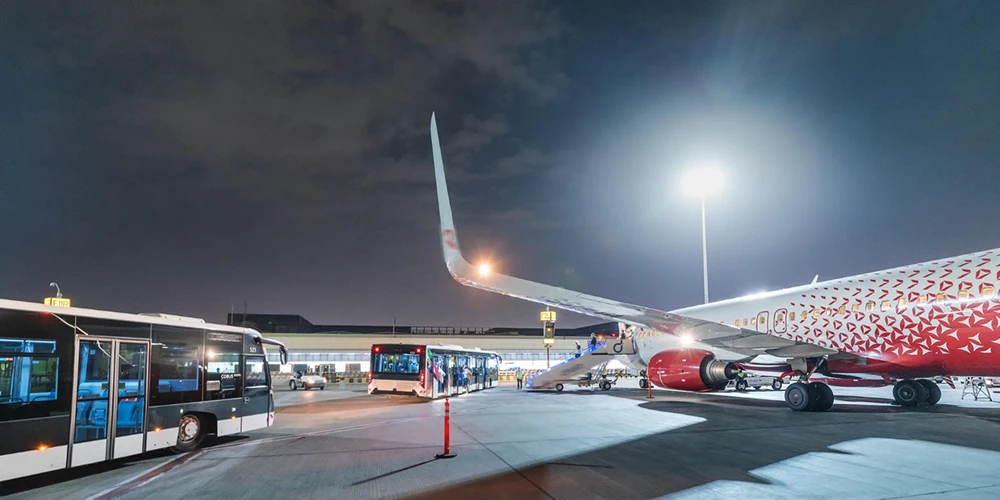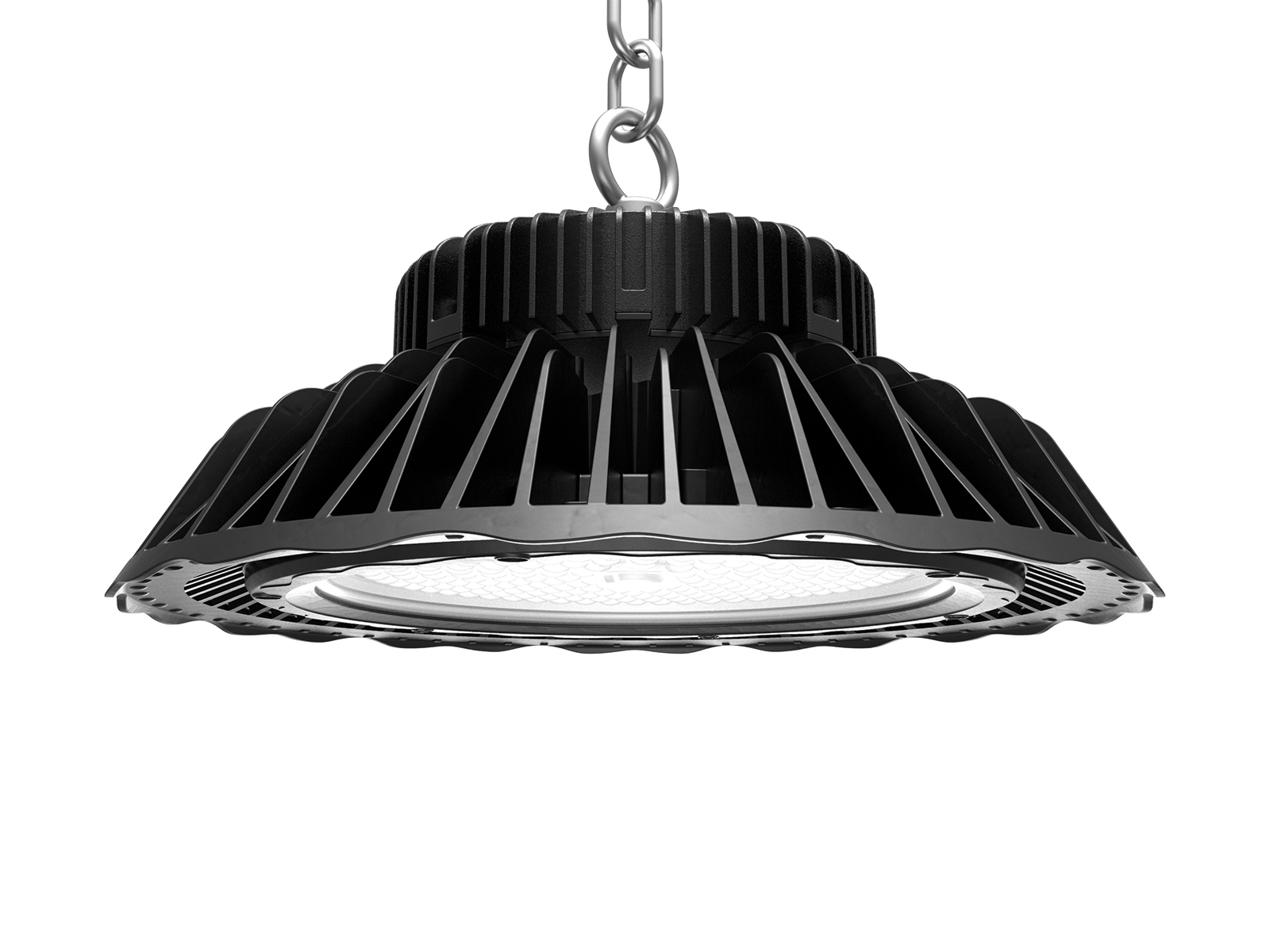Ice hockey is a popular sport in Canada and many U.S. states. However, climate change and water scarcity have a significant impact on hockey seasons.
Recognizing these issues, the NHL launched the NHL Green initiative in 2010. This program promotes sustainable business and sports practices, while also raising awareness of environmental challenges within the hockey community.
One important yet often overlooked aspect of sustainability in ice hockey is lighting. Proper lighting not only enhances player performance and viewer experience but also supports environmental efforts by reducing energy consumption.
In this blog, we’ll explore ice hockey rink lighting that aligns with the goals of NHL Green and contribute to a more sustainable future.
NHL’s Commitment to Sustainability
NHL stands for the National Hockey League, which is the premier professional ice hockey league in North America. The league was founded in 1917 and has grown significantly over the years, now consisting of 32 teams. Beyond the game itself, the NHL is committed to community engagement, supporting charitable initiatives, and promoting the growth of ice hockey on a global scale.
Professional ice hockey often relies heavily on artificial rinks, which require substantial amounts of water for ice creation and maintenance. The process of producing and resurfacing the ice for these rinks is among the most water-intensive operations in sports.
An NHL-regulation indoor hockey rink measures 200 feet by 85 feet (60.96m x 25.9m) and requires approximately 12,000 to 15,000 gallons of water to create its ice sheet. This ice is typically maintained throughout the entire season.
However, climate change, with its warmer winters, has made it increasingly difficult to sustain natural ice conditions. Additionally, water scarcity adds to the challenge, as both outdoor and indoor hockey rely on cold weather and fresh water to function.
To safeguard the future of hockey for upcoming generations, the NHL launched the NHL Green initiative in 2010. This program aims to reduce carbon emissions, conserve water, and minimize waste across the sport. One practical and cost-effective step toward these goals is upgrading to energy-efficient LED lighting, which reduces energy consumption and supports sustainability efforts.
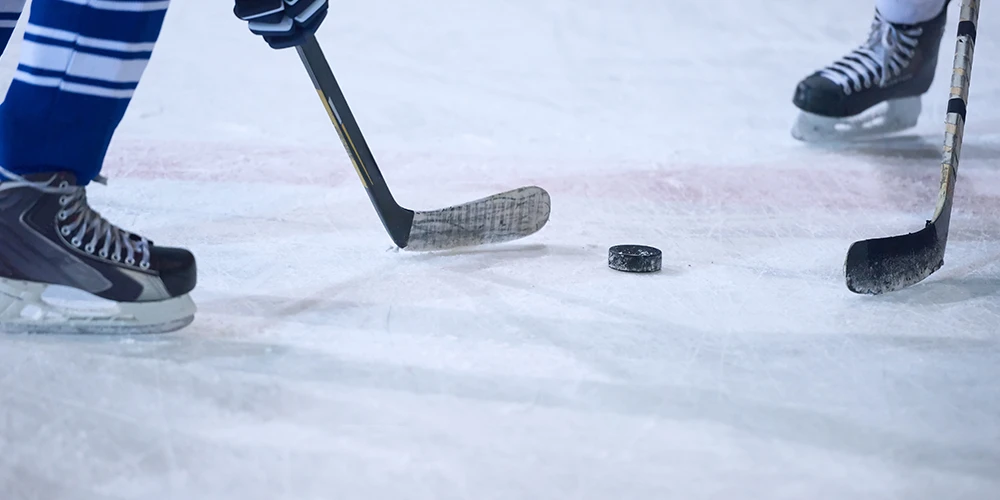
Ice Hockey Rink Lighting Requirements
Ice hockey is one of the fastest and most competitive sports in the world. Players skate across a meticulously crafted ice surface at speeds of up to 30 mph, while the puck can travel at over 100 mph, making the game both exhilarating and demanding.
This requires sufficient and high-quality lighting to ensure safety and avoid accidents as the fast-moving puck.
The recommendation for hockey rink lighting is as follows:
|
Activity |
Illuminance (Lux) |
Uniformity (Horizontal) |
Uniformity (Vertical) |
Min CRI (Ra) |
CCT (K) |
||
|
U1 |
U2 |
U1 |
U2 |
||||
|
Amateur Training |
150 |
0.4 |
0.6 |
/ |
/ |
65 |
4000 |
|
Entertainment |
300 |
0.4 |
0.6 |
/ |
/ |
65 |
4000 |
|
Professional |
1000 |
0.5 |
0.7 |
/ |
/ |
65 |
4000 |
|
TV Broadcast Regional |
1000 |
0.5 |
0.7 |
0.4 |
0.6 |
65 |
5000 |
|
TV Broadcast National |
1000-1500 |
0.6 |
0.7 |
0.4 |
0.6 |
80 |
5000 |
|
TV Broadcast International |
1500-2000 |
0.7 |
0.8 |
0.6 |
0.7 |
80 |
5000 |
Challenges in Ice Hockey Lighting
When it comes to ice hockey lighting, more is not always better. The lighting requirements for an ice hockey rink depend on the level of play and the venue's objectives. While sufficient lighting is essential, over-illumination can create problems, such as glare—one of the most common challenges in ice hockey lighting.
Ice is a highly reflective surface, so when lights are positioned too close or are excessively intense, they can produce glare. This not only causes discomfort but also impairs the vision of both players and spectators, disrupting the game and the viewing experience.
Another significant challenge is shadowing within the rink. Improper placement or installation of the lighting system can cast shadows on the ice, leading to poor visibility. This poses a safety risk to players, as sudden "blind spots" can hinder their performance. Shadows also diminish the enjoyment of fans, making it harder to follow the action.
Fortunately, these issues can be mitigated with thoughtful lighting design and simulation. By addressing excessive brightness and ensuring proper fixture placement, visual experiences can be greatly enhanced.
We offer free lighting design services to help you achieve the required lighting standards for different classes of ice hockey matches. Our solutions aim to minimize glare, shadows, and the costs needed, ensuring a safer and more enjoyable environment for players and spectators.
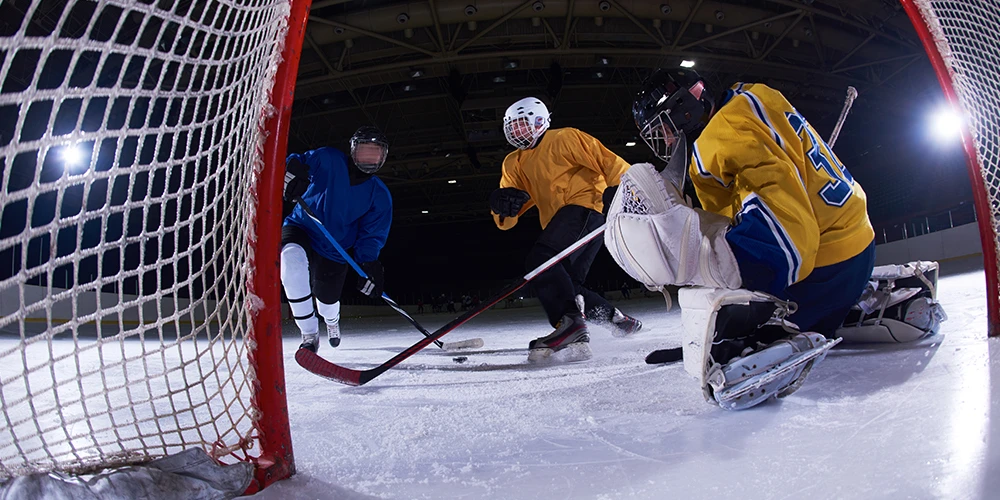
Sustainability in Ice Hockey Lighting: A Case Study
The NHL was the first professional sports league in North America to release a sustainability report and mandate that all its clubs join the Green Sports Alliance (GSA). This initiative emphasizes sustainable practices, including reducing carbon footprints, managing waste, and conserving water.
In line with these efforts, one of our clients aimed to lower their carbon footprint by upgrading their lighting system from outdated metal halide (MH) fixtures to energy-efficient LED lights. The facility in question features two NHL-standard ice rinks, each measuring 200’ x 85’, as well as an indoor soccer field.
Current Setup:
Each ice rink was illuminated by 42 MH 1000W fixtures. The client sought a photometric analysis and lighting design to ensure the new system would meet their performance and sustainability goals.
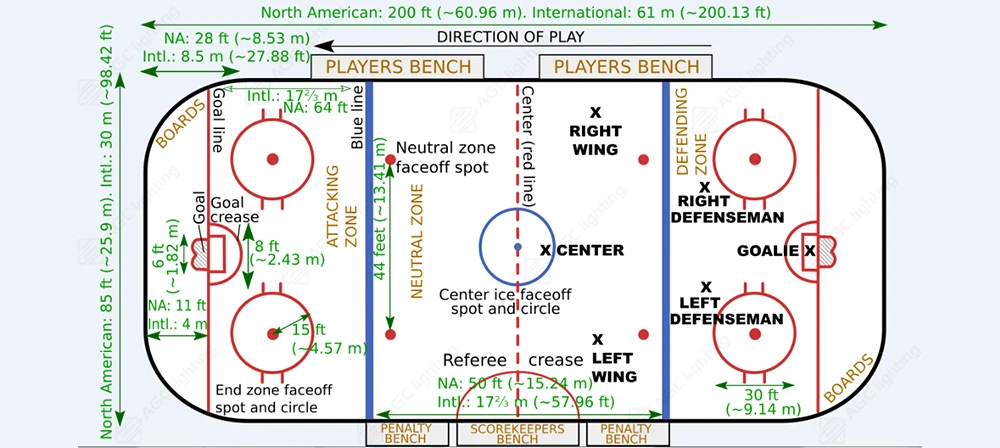
Our Solution:
Our professional lighting designers proposed replacing the 42 MH 1000W fixtures per rink with 42 HB01 high bay LED lights, each consuming just 300W.
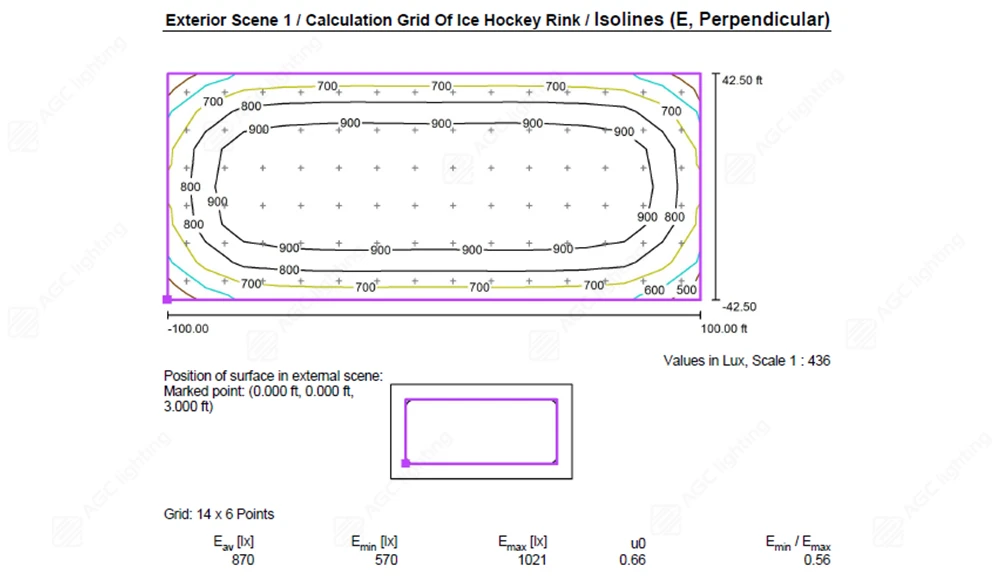
Outcome:
This upgrade resulted in significant energy savings while maintaining optimal lighting levels. The new lighting system achieved an illumination level of 800 to 1000 lux at 3 feet above the ice surface, perfectly meeting the client’s requirements. This solution not only enhanced the lighting quality but also contributed to reducing energy consumption and aligning with sustainability objectives.



